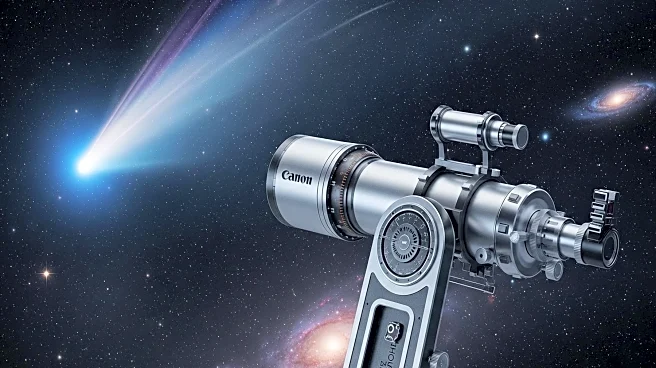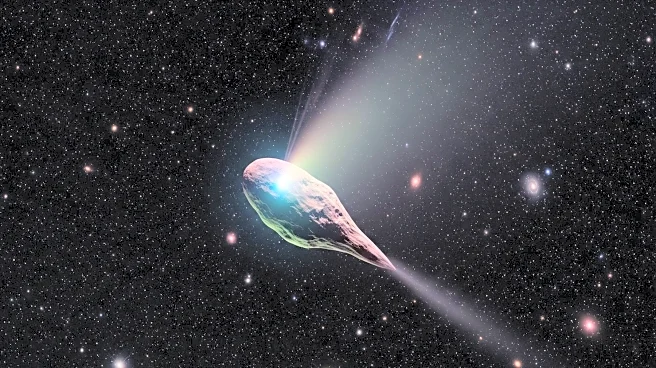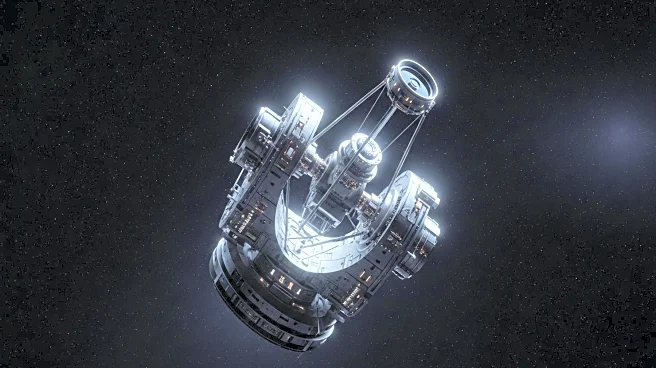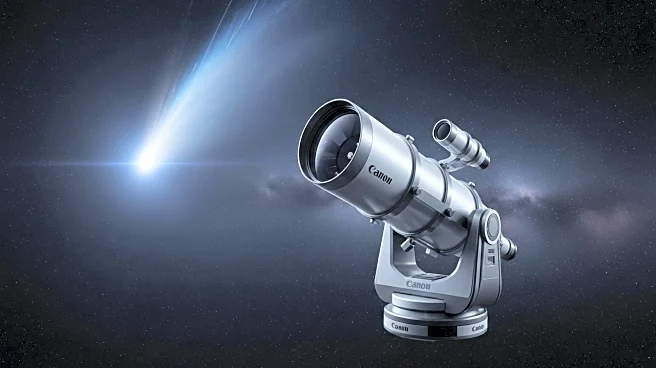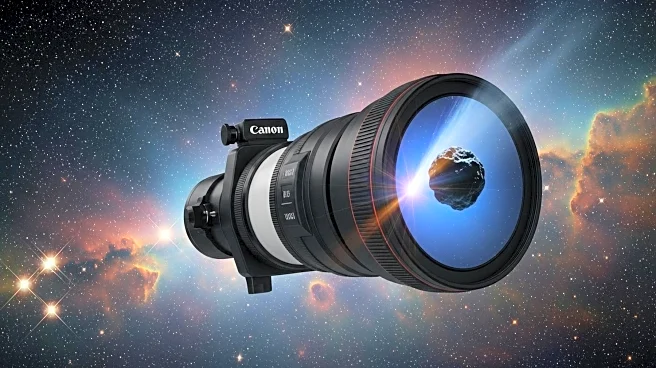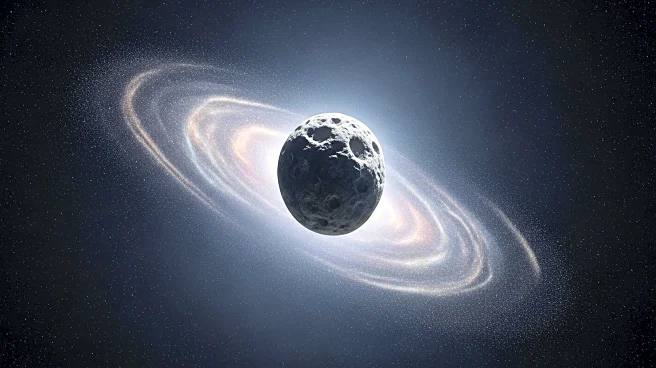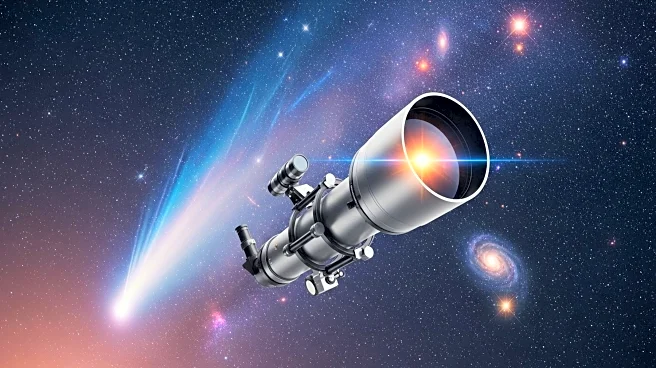What's Happening?
NASA's James Webb Space Telescope has observed the interstellar comet 3I/ATLAS, revealing its unusual composition and behavior. Using the Near-Infrared Spectrograph, scientists detected a mix of gases and solids, including carbon dioxide, water, and carbon monoxide. The comet's carbon dioxide-to-water ratio is one of the highest recorded, suggesting it may have formed in a region with high radiation exposure or near the CO2 ice line. 3I/ATLAS is only the third interstellar comet discovered, having originated from outside our solar system.
Why It's Important?
The study of 3I/ATLAS provides insights into the composition and formation of interstellar comets, which differ from those formed around our Sun. Understanding these cosmic travelers can expand our knowledge of the universe and the processes occurring in distant star systems. The comet's unique composition may offer clues about the conditions in its parent protoplanetary disk, contributing to the broader understanding of cometary science and interstellar phenomena.
